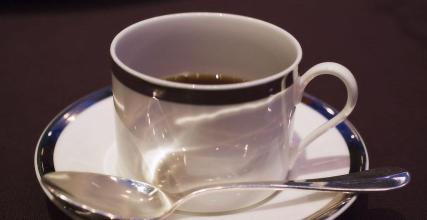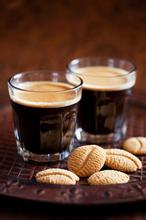Panamanian Coffee Caiser Louis Manor Boqui Special area
Elida Manor is located in the Pokuit producing area of Chiriki Province, the western border province of Panama. The most famous landmark and tourist attraction of the province is the Baru volcano, which is 3300 meters above sea level. Baru volcano is one of the highest volcanoes in Central America, with a total area of about 14000 hectares. It can be divided into seven different microclimate zones according to altitude, within which there are many rare plants, birds and mammals. The Pokuit region is located on the eastern side of Mount Baru, a valley of lava flowing through Panama, next to another well-known coffee producing area in Panama, the Vulcan Valley (Volcan Valley).
Pokuit has always been the most high-profile coffee producing area in Panama, and there are many famous estates in the region-such as Esmeralda, which is famous for the Geisha variety World War I, Hartman, Mama Cata, Kotowa and Santa Teresa, which are always victorious by Best of Panama. Alida Manor itself is also a heavyweight star manor in Pokuit-has won Best of Panama awards for the past five years in a row, second only to Jade Manor. Elida Manor has a total area of 65 hectares, more than half of which are located within the Baru Volcano National Park, 30 hectares of the estate are planted with coffee trees, and the remaining 35 hectares are virgin forests. Coffee is grown from 1670 to 1850 meters above sea level, making it one of the two highest coffee farms in Panama (the other estate with these elevations should be Carmen in the Vulcan Valley). At such a high altitude, the low temperature delayed the ripening of the coffee berries, about a month later than the normal ripening period, while the fertile volcanic soil provided sufficient nutrients for the coffee, coupled with the excellent microclimate brought by the Baru volcano, Elida Manor was able to achieve good results in cup test competitions. In addition to creating good coffee cultivation conditions, the Lamastus family, which runs the Elida estate, has also planted many different native tree species on the estate, not only to shade the coffee trees, but also to provide a friendly habitat for birds. In terms of fertilization, the Lamastus family uses artificial fertilization and a small amount of chemical fertilizers, but never uses pesticides and herbicides that are harmful to the environment. At present, in addition to Catuai, Typica and Bourbon, the Lamastus family also began to plant Geisha varieties a few years ago. In spite of this, Elida Manor used Catuai in all the batches of the Best of Panama competition, but achieved good results again and again, which shows the excellent quality and special flavor of coffee brought by its geographical environment and excellent postharvest treatment technology.
Caisan Louis Manor
Panama boquete casa ruiz S.A.
Caesar, the Borquat region of Panama. Louis
[cup test] clean and fresh fruit flavor, elegant and charming flower aroma, citrus slightly sour, bright and delicate taste, full fruit sweet aroma.
[country] Panama
[producing area] Bocquette
[manor] CASA RUIZ S.A. Caesar. Louis
Washing treatment
[variety] 40%TYPICA 30%CATURRA 20%CATUAI 10%MUNDO NOVO AND BOURBONS
[altitude] 1400 m
[grade] SHB
Volcanic soil
Caesar of Panama. Louis Manor, founded in 1920, is located in the Boqui specialty area of Mount Baru, located in the Poquette Valley of Mount Baru in northwestern Panama. After three generations of coffee planting experience, the family combines more than 300 local small family farms, and small farm coffee farmers join partners from planting, post-processing, baking and marketing, unlike a single manor that cannot increase the scale of production. There is a variety of Typica Caturra Catuai Mundo Novo and Bourbons. The average annual rainfall is 3000 mm (between May and November), the annual average temperature is 14-24 degrees, and the elevation is more than 1400 meters.

Important Notice :
前街咖啡 FrontStreet Coffee has moved to new addredd:
FrontStreet Coffee Address: 315,Donghua East Road,GuangZhou
Tel:020 38364473
- Prev

Planting History of Blue Mountain Coffee beans in Jamaica
In 1717, King Louis XV of France ordered the cultivation of coffee in Jamaica. In the middle of the 20th century, the Governor of Jamaica, Sir Nicholas Nicholas Lawes, imported Arabica seeds from Martinique and began to plant them in St. Andrew. To this day, St.
- Next

Introduction of Coffee Bean growing area in Colombia
In the mountains southwest of Medellin in Antioquia, Colombia, there is a city called Hughton Boliwal, which has a unique greenhouse-like natural environment. It allows people here to inherit and share the traditional harvest of this environment for generations. Mountain。 The Farrows of Benado is a place where the best and highest quality coffee products can be grown, in this soil.
Related
- Does Rose Summer choose Blue, Green or Red? Detailed explanation of Rose Summer Coffee plots and Classification in Panamanian Jade Manor
- What is the difference between the origin, producing area, processing plant, cooperative and manor of coffee beans?
- How fine does the espresso powder fit? how to grind the espresso?
- Sca coffee roasting degree color card coffee roasting degree 8 roasting color values what do you mean?
- The practice of lattes: how to make lattes at home
- Introduction to Indonesian Fine Coffee beans-- Java Coffee producing area of Indonesian Arabica Coffee
- How much will the flavor of light and medium roasted rose summer be expressed? What baking level is rose summer suitable for?
- Introduction to the characteristics of washing, sun-drying or wet-planing coffee commonly used in Mantenin, Indonesia
- Price characteristics of Arabica Coffee Bean Starbucks introduction to Manning Coffee Bean Taste producing area Variety Manor
- What is the authentic Yega flavor? What are the flavor characteristics of the really excellent Yejasuffi coffee beans?

